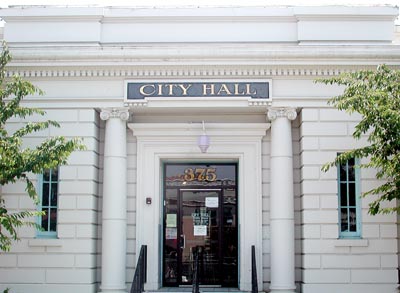Police Capt. Carlos Reynoso’s use of a taxpayer-funded patrol car for his daily commute to and from work – around 100 miles round trip – underscores that the city needs a policy requiring newly hired, sworn, public-safety personnel to live in or near Hollister.
As Hollister City Council members last week picked up the debate – spurred by Councilman Robert Scattini’s questioning of Reynoso’s free rides to and from the police station – they focused on the additional travel costs and whether the benefits outweigh those extra dollars. Council members directed staff officials to return with a plan that would include Reynoso paying some sort of mileage fee. The only number broached was 5 cents per mile, as Councilman Ray Friend pointed out that is what Pacific Gas & Electric charges him when he drives his truck home from his job with the company.
Scattini’s concern about related costs is legitimate, and providing Reynoso with the added benefit is unfair to other city employees. Council members should charge Reynoso a fee that is reflective of actual gas costs, or else have the city equip him with a mobile radio unit in the event there is a major emergency, a relatively rare occurrance, requiring him to immediately drive to Hollister.
Allowing Reynoso to get free, daily commutes and avoid thousands of dollars in lost income for maintenance and gas is ludicrous. He does, after all, choose to live where he lives, while the majority of Hollister’s working population commutes for work and absorbs those same, anticipated costs. The sole benefit – allowing him access to a police vehicle so he can coordinate responses from a radio on his hour-long commute – certainly does not outweigh the obscene cost. This is the same city that faces a $3 million budget shortfall – more than 20 percent of the entire general fund – without voters’ approval of a wobbly Measure T sales-tax increase on the November ballot.
What the controversy also brings to light, however, is that Hollister really does need to develop a policy requiring public-safety personnel to live in or near the city – perhaps a 15-minute rule would suffice, the same range employed by Hollister police in deciding whether rank-and-file officers can use patrol cars to commute.
As the police chief has pointed out in defending his decision to allow Reynoso’s commutes, he expects his two captains to be perpetually on call. It is a lofty responsibility with significant compensation to reflect the job’s importance toward a successful organization. Hollister police captains can earn up to $111,000 annually, on top of lucrative benefits.
The same goes for other sworn public-safety employees. There is an expectation that from time to time, particularly with a rare emergency, police officers and firefighters will be available in urgent situations. Occasionally, they are scheduled as on call for that very reason.
Having to drive an hour in such emergencies makes no sense. Whether it is Reynoso or any other public-safety officer taking the call, taxpayers aren’t getting a fair return on investment. For that reason, Hollister council members should develop a policy clarifying that new, sworn, public-safety personnel must live in or near the city.









